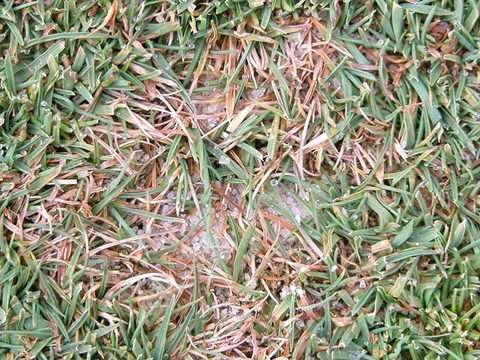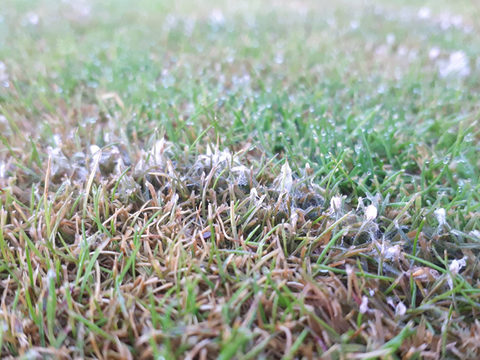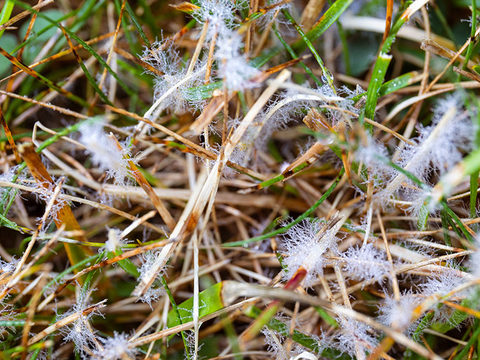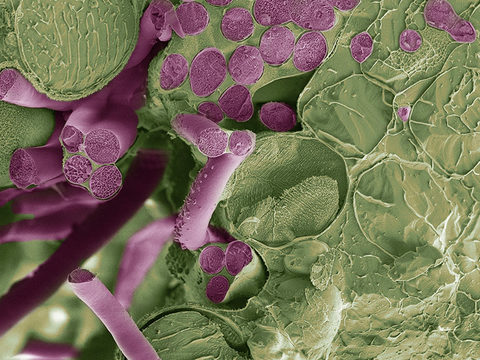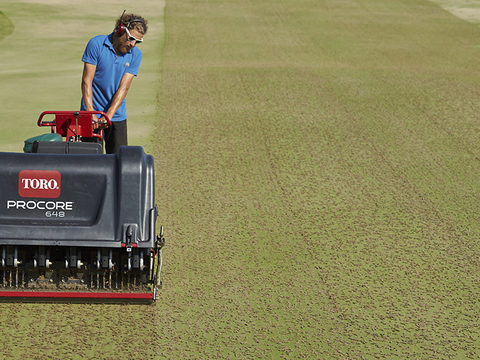Stacking the odds-on weather

When greenkeepers chat, it inevitably comes back to the weather. That's because the weather has such huge implications for almost every turf-based action - especially making agronomic decisions of what to apply and, more importantly, precisely when to get the best results, according to Glenn Kirby, Syngenta Technical Manager.
There have always been challenges with predicting the weather, only things have got more difficult in recent seasons with changing climatic conditions. It’s not just that temperatures are indisputably getting warmer - which brings issues in itself - but now the increasingly violent variability of weather extremes.
The question is just how extreme is it, and just how often does that occur? Weather data holds the key to those questions.
Recently there has been more incidences and reports of dollar spot outbreaks at damaging levels – which had rarely been seen as an issue for the UK in the past.
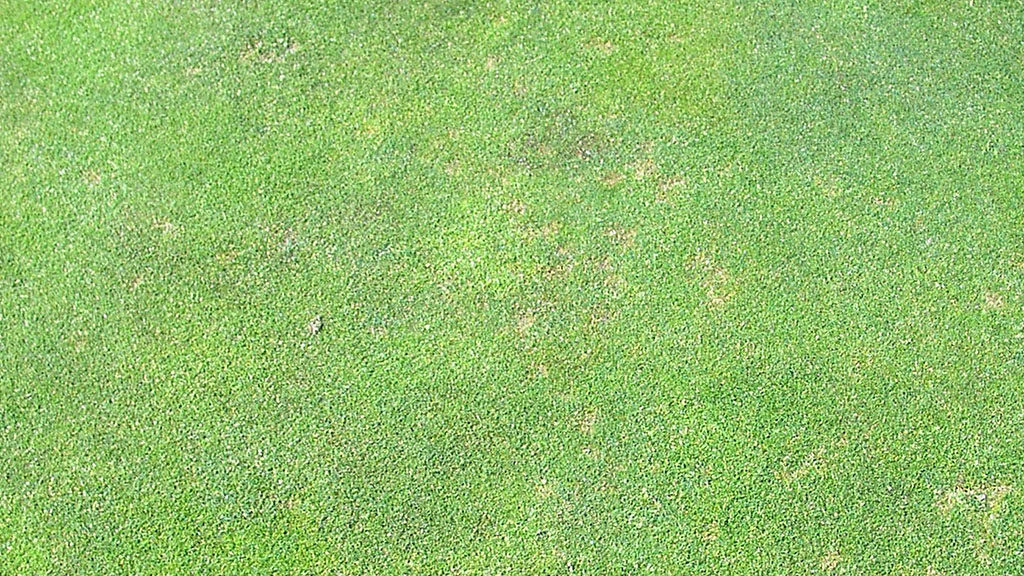
However, when the independently created Smith Kern model of dollar spot disease risk is analysed against historic weather data on the Syngenta Turf website, it is clear that for the south of England, where one risk period would have been the annual norm, now the red flag is typically triggered three or more times in the season (below).
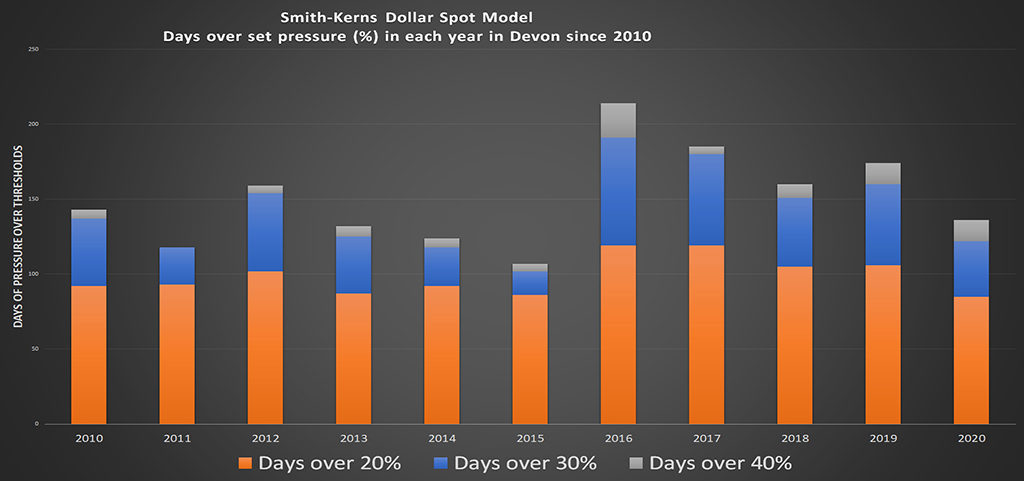
And as we move towards more proactive disease prevention strategies, with better targeting of applications only when and where they are required, so the need for calculating the odds of an issue occurring become more important than ever.
As well as recognising that when the odds change, so the strategy needs to adapt.
With dollar spot, for example, it is recognised that hot, humid – or especially thundery - conditions are a precursor of outbreaks. Turf in low fertility situations and under a tight mowing regime is also more susceptible to attack, particularly on fescue dominant swards.
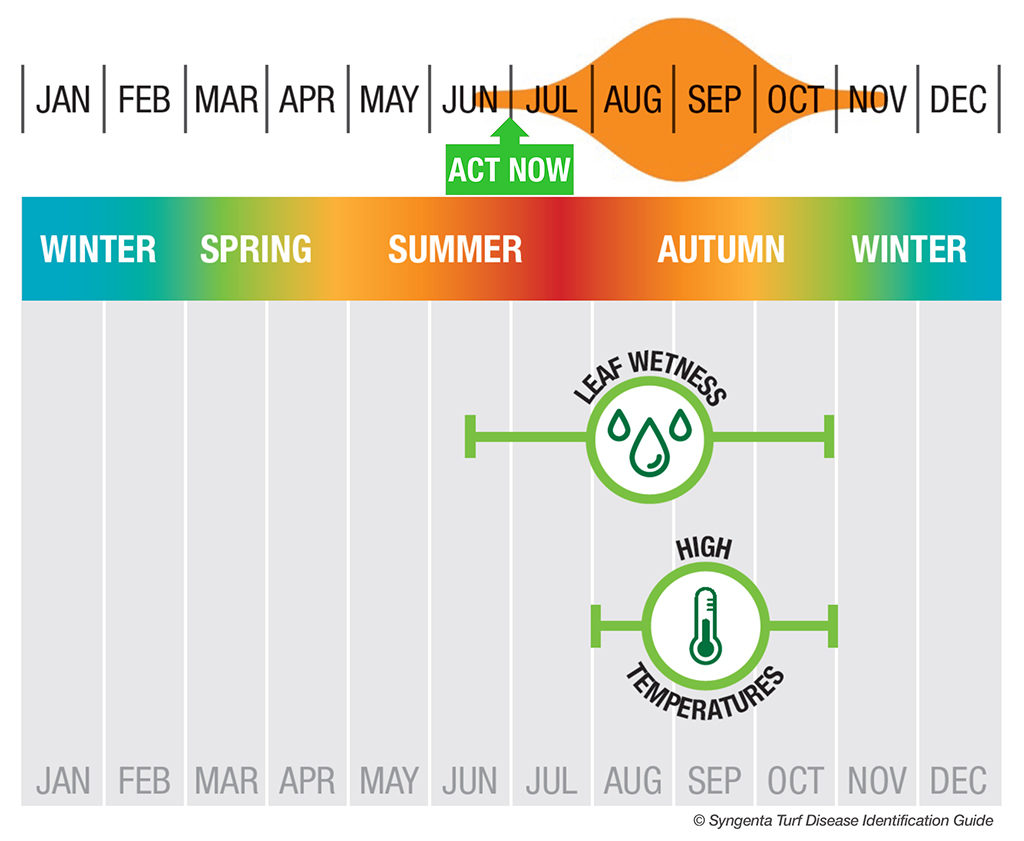
So, if weather patterns are increasingly creating the wet and humid conditions for infection, it makes sense to tailor turf management towards keeping surfaces as dry as possible – by removing thatch, increasing air flow, adjusting irrigation and using Qualibra wetting agent to manage moisture
Then we can better calculate the odds of when applications of Instrata Elite fungicide can best be used to help turf withstand the disease risk pressure and prevent infection. Furthermore, new Integrated Turf Management tools, such as Hicure biostimulant and Ryder pigment, could reduce stress associated with disease susceptibility and minimise the visual impact of damage.
The challenge is that the risk calculation with changing weather is different for each disease, or pest, likely to be encountered.
The stress of prolonged hot dry weather in the summer, interspersed with heavy rain, is the perfect storm for anthracnose outbreaks. The records show, and greenkeepers’ experience confirms, that is happening.
Microdochium patch infection triggered by weather conditions is starting earlier, remaining more active longer through the winter and even popping up at unexpected times – with more serious impacts where it coincides with periods of slow turf growth and recovery.
With leatherjackets, the adults’ egg laying season (below) appears to be extending in the changing conditions. The prolonged cold spring this year has led to more craneflys being reported on Pest Tracker, but no obvious peak of activity - which will make timing of targeted application even more difficult.

Pest Tracker has also seen low numbers of adult chafer beetles reported for most of the UK this season. That is possibly because of the seasonal influence of a very dry April, followed by a cold, wet May, that was not conducive to insect emergence. That may have resulted in more chafer grubs having remained in the soil for another season, with the potential damage that could cause.
Report pest sightings on your course now on Pest Tracker
But weather variability means these occurrences, often highly memorable for the problems they caused, don’t tend to happen everywhere, every year.
The next step is to better interpret the weather data to calculate just how often they are likely to hit, and how to manage the risk.
Understanding the risk of disease and the frequency it is likely to occur is crucial for individual courses to adopt the most appropriate strategy for their situation.
For courses that are totally risk averse to the impacts of disease damage affecting surface quality – be that for the whole season or a specific period, through competition timing, for example – the approach is likely to see more intensive control strategies. Particularly where those courses or situations demand lower cutting heights that will heighten the risk of attacks.

On other courses, however, adopting appropriate ITM strategies may be sufficient to reduce risk to acceptable levels, in all but extreme situations. For them, constant surveillance of weather and disease forecasting could spot the conditions conducive to disease in time to make a preventative application.
Historical disease records also highlight the nuance of regional interpretation.
Average summer temperatures on the south coast are regularly 2⁰C higher than Yorkshire throughout the summer, for example. The implication of this is the north of England or Scotland may have different challenges: they may go into moisture deficit less frequently, but regularly move into microdochium risk conditions earlier in the year. However, the fact they are more likely to move into cooler temperatures quicker, means that disease may not linger as long.
All areas and sites will require different actions. On a more local level, coastal courses have typically not experienced the same level of variability of inland areas, for example.
Understanding the odds of weather events occurring, rather than relying on the last year’s memory or looking back through rose tinted spectacles, gives the chance to create more effective preventative strategies. New more detailed WeatherPro services, along with enhanced data visualisation of weather factors that influence turf management, will prove powerful tools for more effective decision making in the future.
Click here to read all Glenn Kirby's Greenkeeper International Insight articles





